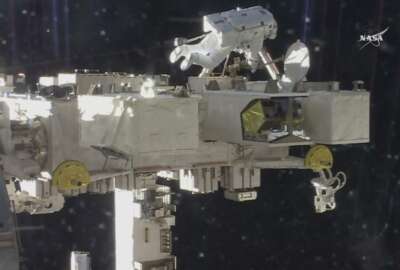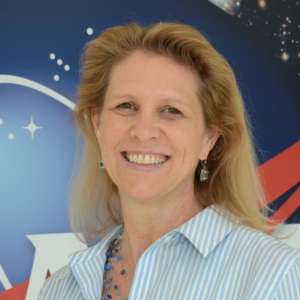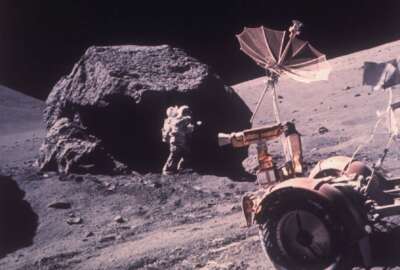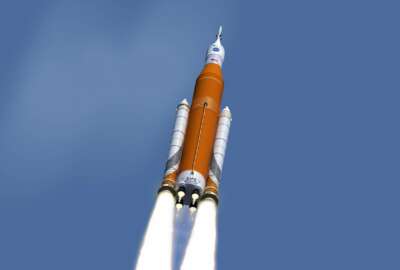
NASA’s curiosity: Not just a rover on Mars
NASA's Planetary Science Division focusing research and projects on missions within the solar system to determine what evolution of other planets could potentially...
News on space exploration may be largely focused on the moon and Mars these days, but NASA scientists within the Planetary Science Division are actively collecting data and information on all of the planets within the solar system.

The division, largely focused on the organization and management of missions and research, is made up of a team of about 50 scientists. It addition, it supports and funds research for scientists at other NASA centers, within university labs and other private organizations.
The cold and gaseous planets orbiting the sun — though some may have similar characteristics — are very, very different. Lori Glaze, acting director of the division, said it takes a coalition of different scientific disciplines to truly tell the story of not only how a planet works, but how to compare and contrast between them.
“We have people who study the geology, and want to understand the geological processes on the surfaces of rocky planets. We have individuals who are very interested in atmospheres and how atmospheres form and how they work,” Glaze said on Agency in Focus: NASA. “Then we have folks that are interested in the geophysics — the interior structures of each of the planets — or even the magnetosphere that is way out beyond the outer parts of the atmosphere…”
Research sponsored by the division is mainly focused on the evolution of the solar system, what kind of environments can support or sustain life and how to potentially detect if life still exists beyond the Earth’s surface.
But where does the information come from? Glaze said the data they use in their research comes from a wide variety of sources including ground-based observatories, space-based telescopes and other space missions.
“These could be orbiting missions that carry a bunch of instrumentation that can make remote measurements of atmospheres and surfaces of the various planets, or they could be probes that go down and measure the chemistry of the atmosphere as they descend, or landers that land on the surface or even rovers such as the curiosity rover on Mars,” she said.
Technology is an ever-evolving, but important asset in any scientist’s tool belt. NASA researchers are reliant upon computers and other technology to digest the remote-sensing data collected from satellites and planetary orbiters, to display and look at different images of planets and other parts of space and to create full-scale models.
Glaze said these aren’t necessarily super computers either.
“Desktop computing has become so incredibly capable that almost every scientist has a very capable computer on their desk and does most of their work through that desktop computer,” she said.
Missions
Glaze said her office has a variety of different approaches to determining what missions NASA will sponsor, including using traditional surveys. One example is the recurring Decadal Survey.
“Every 10 years we ask the National Academies of Science to make recommendations to us about the highest priority science questions we should be trying to answer and through that process they can recommend some of the larger missions that you may hear about,” she said on Federal Drive with Tom Temin. “For example, we’re working on the next generation Mars rover that’s going to launch in 2020.”
Another potential mission chosen through this process aims to explore Europa Clipper, a moon orbiting just outside of planet Jupiter.
Surveys are important to the process, but they are not the only way NASA begins new missions. There are also competitive processes in place that allow researchers and scientists throughout the community to send proposals to the division of different scientific missions and concepts that they believe should be explored.
“We have a very rigorous evaluation process that we go through to select missions through that process,” Glaze said. “So they are really creative and innovative ideas that come from within the scientific community that try to address, again, some of these highest priority science questions that we have.”
Glaze is a large supporter of current commercial space activity as well. She said it has potential to not only answer some of the questions data and electronics can’t, but also make space exploration more cost-effective.
The agency is currently working on an initiative to jumpstart some of the commercial spaceflight programs, such as ongoing research and design under SpaceX and Blue Origin. She said it is their goal to help the providers get their instruments and spacecrafts up and flying and traveling to the moon.
“To me that [will provide] a tremendous opportunity for us to fly scientific experiences to the moon on a regular cadence that let’s us start really trying to answer some of our compelling questions,” Glaze said.
Research & development
In 2018, encouraging diversity in the federal workforce has been a priority of many agencies. Glaze said NASA is definitely on the forefront of that trend.
“I’m really impressed with the concerted effort that NASA has made in really trying to make sure that they have a diversity of thought and opinions at every table, and at every level of management within NASA,” Glaze said. “Really seeing the number of women in the management roles and in higher-level roles is impressive.”
But how do we encourage more women and young people in general to join the STEM fields? Glaze suggests making subjects like math more exciting for kids by explaining its importance in terms of science and technology. She said kids in general are more interested in science.
Though her background is in volcanic activity, Glaze said learning of the atmosphere’s and surfaces of the planets in the solar system has helped her to understand more about the Earth we live on and vice versa. One of the research projects on Venus opened questions about chemicals in its atmosphere could be destroying the planet and the ability for it to sustain life.
“We were studying Venus and trying to understand some of the chemistry processes going on in the atmosphere and realized that the chlorine in Venus’s atmosphere might be destroying some of the oxygen species,” she said. “And then [we] wondered, what if that would be happening on Earth?”
She said this was one of the reasons why people even looked at the possibility of a whole developing in the ozone layer.
Copyright © 2025 Federal News Network. All rights reserved. This website is not intended for users located within the European Economic Area.
Steff Thomas is a digital editor at Federal News Network.





